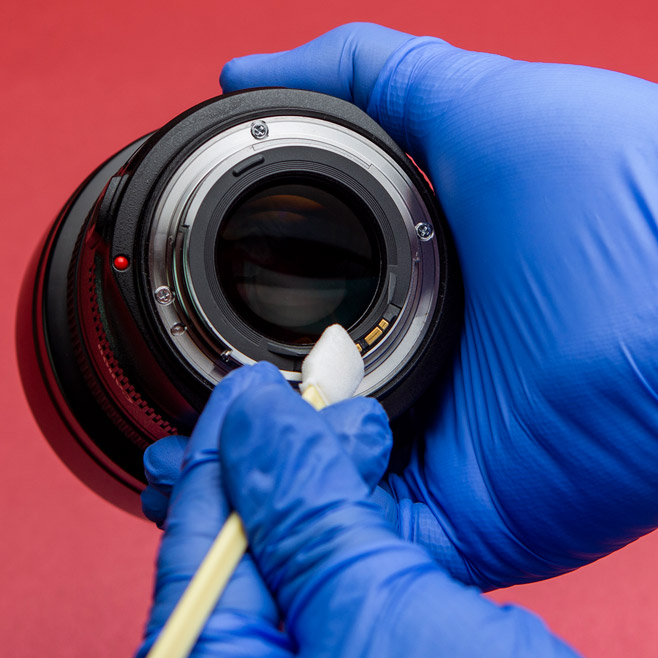Cleanroom News, Food Contact Surfaces
Spuds in Space – Can New Tech Launch Potatoes as the Next Interstellar Food?
Spuds, taters, cobblers, Idahoes, ground apples, and the Staff of Life…potatoes enjoy almost as broad a variety of sobriquets as they do culinary uses. A starchy tuberous plant of the perennial nightshade family, Solanum tuberosum, ‘potato’ refers to both the plant and to the part we normally eat, the tuber. And we certainly love to eat them. On average, the American consumer gets through 114lbs of these ground apples annually, the majority as French fries and a small percentage as canned vegetables.(1) And this love affaire with the cousin of the tomato, chile pepper, eggplant, tobacco plant, and the petunia is not confined to the United States. From the Columbian soup, ajiaco, through the colcannon of Ireland, to the xogoi momo of Tibet and zippuli of Italy, the potato has been embraced globally, due to its comparative thrift and relative ease of cultivation. At this time it represents a staple food in so many parts of the world that it is considered integral to the security of the world’s food supply.
And aside from a brief dip in popularity in Britain of the 19th century (when the potato-averse ‘Society for the Prevention of an Unwholesome Diet’ sought to banish the tuber from those shores) the spud has enjoyed a long and at times glorious world history. First domesticated in what is now modern-day Peru, the potato was brought to Europe by Sir Walter Raleigh or Sir Francis Drake (depending on which sources you read) in the latter half of the 16th century following the Spanish conquest of the Incan Empire. And humble tuber that it was, it was a political game-changer. As historian William H. McNeill notes,
“By feeding rapidly growing populations, [it] permitted a handful of European nations to assert dominion over most of the world between 1750 and 1950.”(2)
In other words, as Napoleon is often credited as saying: since ‘an army marches on its stomach’, the otherwise unremarkable potato was the fueling force behind the rise of the West.
That is, until the middle of the 19th century when the singular lack of genetic diversity combined with massive reliance upon the single crop led to disaster. Between 1845 and 1852, one genotype of the oomycete Phytophthora infestans – also known as potato blight – ravished crops and led to the Irish Potato Famine in which more than one million people died of starvation, fueling another million to emigrate in search of a better future.
And although the Great Famine is perhaps the best known example of the havoc this adaptable and virulent pathogen can wreak, it is not the only one. In fact, Phytopthera infestans persists as a threat to contemporary potato production with estimated global annual losses that would otherwise have fed upwards of 80 million people.(3) Clearly some work needs to be done to curtail this pest.
But could that work be done in a cleanroom environment?
It will scarcely be news to anyone that potatoes, as subterranean plants, tend to like dirt. Favoring areas where they can enjoy warm days and cool nights, spuds thrive in rich sandy loam soils, nestling in furrows for their 120-150 day growing cycle. So given their affinity with the dirt, could the potato not only survive but actively thrive under cleanroom conditions? We’re glad you asked. In terms of current potato research and propagation, the sterility of contamination-controlled facilities is actually critical to ensuring that bacterial and viral pathogens are eliminated and healthy new plants develop. As a recent article ‘Potatoes Spend Time in Cleanroom Before Heading to the Plate’ in Controlled Environments states:
“[C]lean is a big deal for potatoes. Because they are grown from the eyes of tubers, called seed potatoes, rather than from true seeds, potatoes can easily carry bacterial and viral diseases in their starchy flesh from generation to generation. The solution is exacting cleanliness and rigorous testing at every stage of potato propagation.”(4)
So the key to modern potato science is a clean environment, protected from fungus, bacteria, viruses, and other contaminants, but one which mimics ‘natural’, earth-like conditions for growth and cultivation. And you would be forgiven for thinking that this combination of clean and dirty is not such an easy one to find. Bear with us as we digress for a moment…

In October 2016, author T.C. Boyle published his acclaimed near-future novel, The Terranauts, in which a group of scientists fought for survival in a simulated off-Earth biodome environment. In that narrative, the researchers – dubbed ‘terranauts’ – are pushed to the brink of sanity by the rigors of sustaining themselves and their environment within the ecosphere. Although successful long-term existence in a hermetically-sealed biodome remains the preserve of science fiction writers, Boyle’s work was based upon a real-world experiment by Space Biosphere Ventures, which constructed Biosphere II, a biodome facility in Oracle Junction, AZ. The aim of the project was to test whether such closed ecological systems could, in fact, support human life on other planets, with Mars being the primary target for human relocation. As in Boyle’s dystopian re-telling, the Biosphere II experiment ran into myriad problems including animal deaths, the breakdown of inter-personal relationships, oxygen depletion due to equipment failure, and crop failure. And, although it generated important data in understanding the challenges of a transition to to extra-planetary life, the toll of the experiment was heavy.
But fortunately for contemporary researchers it is not absolutely necessary to commit to this same kind of project, entombed in a hermetically-sealed glass bubble in the desert. Fortunately, we now have Earth-like artificial test facilities such as the Biotron Laboratory. Situated, of all places, in Wisconsin.
Sounding like the title of a classic 80s sci-fi movie, Biotron was built by the National Science Foundation in the 1960s and is based in the heart of ‘America’s Dairyland.’ Although better known for milk production, this north-central state is also an important locus of general manufacturing, renewable energy production, tourism, and – although scarcely the next Hollywood – film production. But it is the Biotron facility, housed at the University of Madison-Wisconsin, that is currently making the news. Offering a range of controlled testing environments for commercial and academic researchers in the fields of animal, plant, and materials research, the multi-space campus features projects as varied as LED light development for plant growth to equipment for Antarctic drilling and projects in partnership with government agencies such as NASA. The laboratory facility boasts state-of-the-art equipment, round-the-clock monitoring, and 24/7 support personnel, and can re-create the exact terrestrial conditions of (almost) anywhere on earth with simulated environments. The wavelength of ambient light can be adjusted as can atmospheric stressors such as manipulations of carbon dioxide levels. Using low pressure hypobaric chambers, the effects of high altitude can be simulated, and hydrological tweaks combined with contamination-control offer researchers flexible and innovative paths to understanding drought/flood tolerance. And one important project to recently hit the headlines is the facility’s interest in cultivating the common potato.
As discussed above, reliance upon one genetic strain of any crop can be a recipe for disaster if that particular strain is sensitive to damage. And damage can result in an almost infinite number of ways – from blight like Phytopthera to that inflicted by a rise in global temperatures. And with this in mind, on Biotron’s uppermost floor researchers at the Wisconsin Seed Potato Certification Tissue Culture Laboratory, a 104-year old program, are focusing on ways to improve tissue culture growth, performing pathogen testing, and reviving commercially-viable potato varieties. And this is no small feat given that the lab supplies seed stock for approximately 90% of the types of potato grown in Wisconsin.
But how do they do this? Genetic cloning technology.
…all of these plants are genetically identical to their progenitors and, given the sterility of the contamination-controlled environment, absolutely clean.
Lead scientists Andy Witherell and Brooke Babler have developed a program whereby they remove the eye of a potato and transplant it to a sterile growth medium that prevents bacterial or viral contamination. When the potato sprouts, an increase in heat destroys any lingering contamination and a portion of the stem is cut off and transplanted to a new growing medium. In this way, Witherell and Babler can propagate 30 new plants from an original pool of just eight. These 30 are then used to create 80, and then finally 310, and the most exciting aspect of the research is the fact that all of these plants are genetically identical to their progenitors and, given the sterility of the contamination-controlled environment, absolutely clean.
‘“It’s fantastic for our cultures,” says Andy Witherell, manager of the lab and its Biotron rooms full of tiny potatoes budding in racks of test tubes. “Our contamination rates are so low and we can watch the plants progress without worrying about the lab environment introducing problems”’(5)
Is NASA’s involvement with the potato project simply a way to feed a traveling, inter-stellar population?
So what does that mean in terms of real-world impact? Is NASA’s involvement with the potato project simply a way to feed a traveling, inter-stellar population? Is this interest merely confined to spuds in space? Interestingly, the answer to that question is a resounding ‘No.’ Although in itself the idea of cultivating this most ancient of vegetables in a zero-gravity environment is an exciting prospect, it represents an even bigger possibility in terms of global food security…
As we learned in a previous article, ‘What Do Cleanrooms, Mars, and Cooking Have in Common?’, in author Andy Weir’s 2014 break-out best-seller, The Martian, an abandoned astronaut on a Mars outpost survives by cultivating potatoes. And Weir did not select this vegetable randomly. In fact, there is a relatively long history of the cultivation of the tuber in space with facilities such as Biotron partnering not only with NASA but also the International Space Station to conduct experiments in the plants response to microgravity. And as far back as 1995 “the potato became the first vegetable to be grown in space. NASA and the University of Wisconsin, Madison, created the technology with the goal of feeding astronauts on long space voyages, and eventually, feeding future space colonies.”(6)
But times have moved on and sustenance during space exploration may not be the sole focus of the agency’s continued interest in this project. Given the increasing global demand for cheap, dependable, and nutrient-rich food, NASA’s technology combined with a new technique pioneered in China is taking the cultivation of seed potatoes to the next level. Literally. Quantum Tubers, a project of American Ag-Tec International Ltd. Of Delevan, WI, is using controlled environment technologies to create marble-sized minitubers that are typically grown from plantlets. In a natural growing cycle only one crop of these seed potatoes can be grown per year, but using climate-controlled chambers, scientists can leverage lighting technology, temperature and humidity controls, and automation to produce contamination-free minitubers on a 40-50 day cycle. As a report on Nasa.gov states:
“One facility can now produce as many as 10 to 20 million minitubers per year — a huge benefit to countries that, in the past, have been forced to depend almost entirely upon imported seed potatoes to meet their needs.”(7)
And given our steady population increase and undeniable climate change, this enhanced capacity and ability to grow food in controlled indoor environments can only be seen as a positive step. As Bjorn Karlsson, Biotron’s greenhouse manager, notes:
“The future of the Biotron as becoming increasingly important because the world is becoming more urbanized. By 2050, 75 percent of the world’s population will be urban. This will push people to create and grow food in urban areas — in controlled environments. The Biotron can provide a very strong research platform from which to expand those technologies.”(8)
This is food for thought next time you give in to the temptation of a bag of potato chips…
Are you intrigued by the possibilities of potatoes in the cleanroom? Or excited by the prospect of growing food in protected environments? Perhaps you think agriculture and cleanroom technology should not mix? Whatever you think, we’d love to know…
References:
- http://www.nationalpotatocouncil.org/files/9314/6955/6798/NPCyearbook2016_-_FINAL_78.pdf
- http://www.smithsonianmag.com/history/how-the-potato-changed-the-world-108470605
- https://arxiv.org/ftp/arxiv/papers/1305/1305.4206.pdf
- https://www.cemag.us/news/2017/05/potatoes-spend-time-cleanroom-heading-plate
- http://news.wisc.edu/biotron-puts-any-environment-on-earth-within-researchers-reach/
- http://idahopotatomuseum.com/potato-facts/
- https://www.nasa.gov/vision/earth/everydaylife/spacespuds.html
- https://badgerherald.com/news/2016/02/10/uws-biotrons-terrestrial-capabilities-surpass-labs-around-the-country/




















Pingback: Can New Tech Launch Potatoes as the Next Interstellar Food? - Food Contact Surfaces